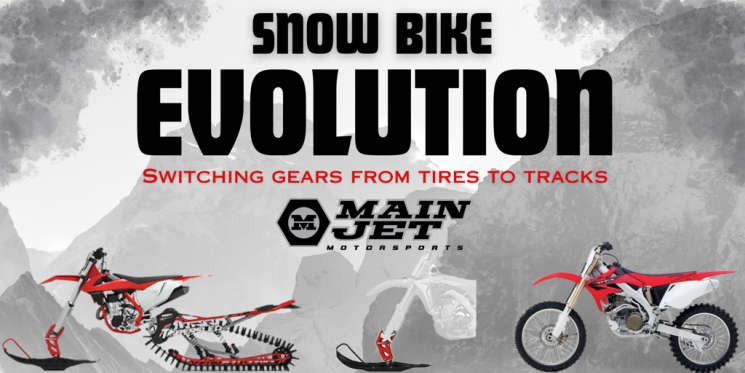
For many thrill-seekers, the end of the riding season doesn’t signal a hiatus. Instead, they eagerly await the arrival of snow to embark on a whole new adventure: snow biking. The concept of adapting dirt bikes for snowy terrain has a fascinating history, with significant developments along the way, including the emergence of industry leader Timbersled. In this blog, we’ll delve into the history of snow bikes, compare them to snowmobiles, and offer tips for those venturing into the winter wonderland of snow biking.
A Brief History of Snow Biking: Where It All Began
The idea of converting dirt bikes for snow riding is an innovation born out of necessity. Many enthusiasts couldn’t bear the thought of storing their bikes during the winter, so they got creative.
The concept started gaining traction in the 1960s, with homemade conversions using skis and rear tracks. These early designs were more about passion than practicality. Fast forward to the late ’90s and early 2000s, snow bike kits began hitting the market, albeit in a rudimentary form.
The turning point for snow biking came when Timbersled, a company founded in 2010, revolutionized the industry. They introduced a high-performance, purpose-built snow bike kit that garnered immense popularity. Timbersled’s innovative approach catapulted snow biking into the mainstream.
Timbersled: Leading the Charge
Timbersled, headquartered in Sandpoint, Idaho, has firmly established itself as an industry leader in the snow bike world. They offer a range of kits that are known for their quality, performance, and versatility. Timbersled’s commitment to innovation has been pivotal in the development of this sport.
Their kits include specialized components like front ski systems and rear suspension with a snowmobile-like track. Timbersled has set the bar high for snow bikes, consistently pushing boundaries to provide riders with an exceptional experience.
Snow Biking vs. Snowmobiling: The Showdown
Now, you might be wondering, what’s the difference between snow biking and snowmobiling? Let’s break it down:
Advantages of Snow Biking:
- Maneuverability: Snow bikes are incredibly nimble, allowing riders to tackle tight trails and challenging terrain with ease.
- Versatility: Snow bikes offer year-round enjoyment by switching between snow and dirt configurations.
- Accessibility: They’re more accessible for beginner riders due to their similarity to dirt bikes.
- Lightweight: Snow bikes are lighter than most snowmobiles, making them easier to transport and handle.
Disadvantages of Snow Biking:
- Speed: Snow bikes tend to be slower than snowmobiles, particularly on groomed trails.
- Range: Snowmobiles often have larger fuel tanks, enabling longer rides without refueling.
- Storage: Snow bikes require more space for both the dirt and snow configurations.
A Word of Advice for Aspiring Snow Bikers
If you’re considering getting into snow biking, here are some things to keep in mind:
- Experience Matters: Snow biking can be demanding, so it’s crucial to have off-road motorcycling experience.
- Safety First: Always wear appropriate safety gear, including avalanche equipment if you plan to venture into the backcountry.
- Training: Consider taking a snow biking course to familiarize yourself with the equipment and riding techniques.
- Timbersled Expertise: When it comes to snow biking, nobody knows the game like Timbersled. Main Jet Motorsports specializes in Timbersleds and is your go-to source for knowledge, products, and support in the Kootenay area.
As winter descends upon us, it’s time to shift from dirt to snow and embrace the exhilarating world of snow biking. With the history, innovation, and industry leadership represented by Timbersled, there’s no better time to dive into this incredible sport. So, bundle up, gear up, and prepare for a season of white-knuckled adventures!

